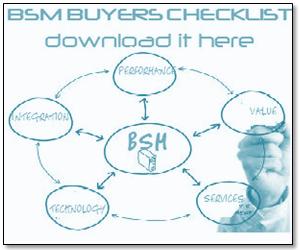Business going to the Cloud can be the Catalyst for IT to Measure and Communicate Value!
How many of us have heard what a road block IT is, how costly / what a mystery IT is and IT cannot communicate value to the business leaving frustration in the organization. It’s sort of like the Mars and Venus thing and “if they only understood me better” debate. It’s OK to laugh, we all suffer these discussions, I too am guilt – the makings of a good Dilbert cartoon no doubt ending with Catbert reigning down his wrath of mandates. However, with all sourcing decisions, it is about creating change in an environment where change is difficult and should be embraced. IT has the opportunity to do just that and be the hero in the end. This is a good sourcing option as it creates the change that will drive down costs that are difficult for in-house IT to drive.
Moving from technology silos to managing and communicating in terms of services is easier than one thinks. It does require different management approaches and technology, measuring in terms of service and yes, sometimes the right investment can save money in the end while creating value. A recent NetworkworkWorld Article has a good quote from a good friend of mine and Forrester analyst, Glenn O’Donnell, “invest in analysis, not monitoring”. The monitoring data is required, but means nothing when not related to other bits of techno data and turned into information by which to perform useful analysis about services and the value delivered to the business. This becomes ever more challenging when in a mixed environment, physical, virtual, cloud, and when many management tools exist as well.
CIO also published an article yesterday “Why IT Costs Must Come Out of the Black Box — Now” describing similar requirements for service measuring and service transparency. The lack of transparency drives the business to seek alternatives where they contract for a service and know the cost. What is often left out is the definition of good service levels, which is a topic for a separate blog. The new service appears cheaper and why is that? Economies of scale is one piece, shared service, ……the second piece is they are very standard, non custom, no configuration, minimal choices, if any, services. Standardization that is difficult to impose from in-house without the cost transparency, service measurements and links to business priorities. This is not a fair apples to apples comparison of services, however, a standardization many IT organizations have difficulty implementing as an in-house provider without the measuring of services and transparency, but possible moving forward.
Instead of challenging the business in moving to a cloud provider, I suggest embracing it and offer that history will repeat itself with many of these start up providers bringing the service back in-house and providing the opportunity to be the hero, improve service quality, reduce costs and communicate value. Many will fail due to lack of good service level agreements, lack of the business asking for them and collapse or dissatisfaction of the business with a single costly service impacting event.
Embrace the opportunity to do a few things in the meantime:
1. Standardize, drive down costs for services and technologies that do not require customization
2. Measure the provider, start to deliver service levels and views of transparency of in and outsourced services
3. Develop and Implement the service view and transparency into the “black box” of IT
4. Invest in the analytic measuring and viewing technology, less on the commodity monitoring – explore open source
When Outsourcing Creates Good Change – Embrace the Cloud Providers – Consolidate Tools and Invest in becoming a Service Measuring Organization Communicating Value!














